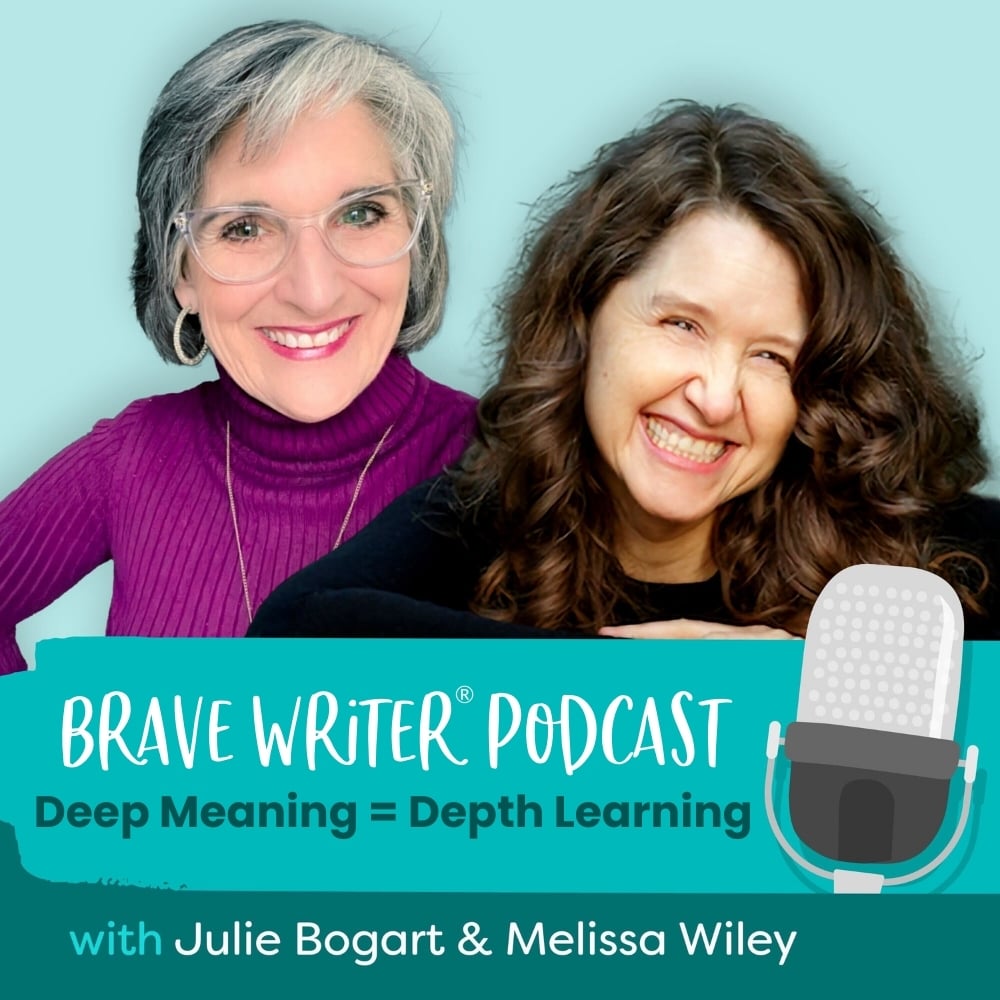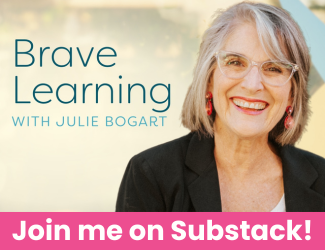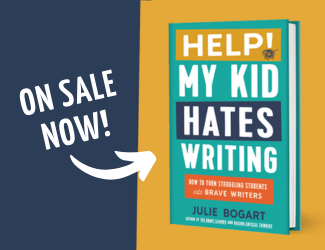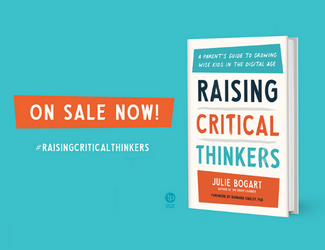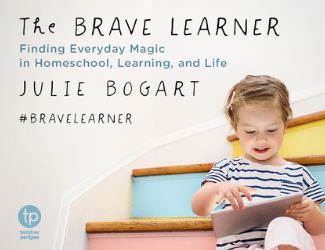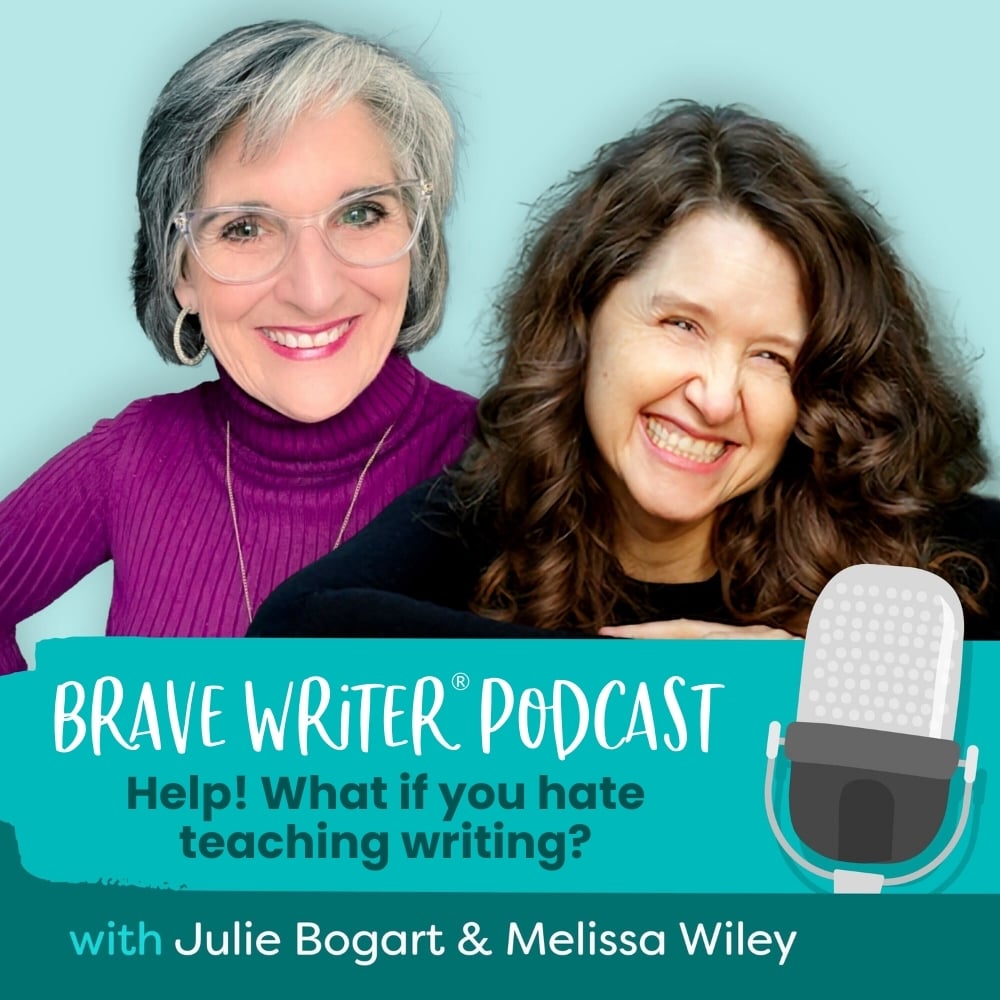
Do your kids hate writing? You’re not alone.
In this Brave Writer podcast episode, we explore why so many children (and adults!) feel blocked when it comes to writing—and why it’s more important than ever to teach kids to write from scratch, even in an age of AI.
We look at:
- the emotional power of writing,
- the damage done by performance-based instruction,
- and how we can shift our approach to help kids see themselves as thinkers and communicators.
Listen to hear an excerpt from Julie’s new book, Help! My Kid Hates Writing, and learn how to turn struggling students into brave writers.
Show Notes
We’ve all had moments when writing felt like a public trial—every word scrutinized, every typo judged. In a world where artificial intelligence can compose an entire essay faster than we can pour a cup of tea, it’s fair to ask: why even bother teaching kids to write at all?
Here’s why.
Writing is self-expression, not just self-presentation.
It’s tempting to see writing as a performance for others. But at its core, writing is about externalizing our internal world. When kids are given the freedom to write what they truly think—even if it starts with “I hate this”—they start to connect with their own voice. That’s when transformation happens. Writing isn’t just for grades; it’s for healing, discovery, and clarity.
Yes, AI exists. No, it doesn’t replace your child.
Sure, technology has made it easier to bypass the hard parts of writing. But it hasn’t replaced the most valuable part: the human part. No machine can replicate your child’s one-of-a-kind perspective. We write because no one else can think exactly what we think. We write to preserve our voice in a way no algorithm can duplicate.
Kids love writing—they just don’t love school writing.
Give a child a phone, and they’ll write all night. Texts, captions, comments, scripts—they’re already writing. But it’s writing that feels meaningful to them. What they resist is the sterile, formulaic kind of writing we often assign in school. When we reposition writing as a tool for thinking, creativity, and connection—not just academic performance—it becomes something worth doing.
We teach writers, not just writing.
When we put the writer at the center instead of the assignment, we unlock something powerful. Kids become thinkers, not just students fulfilling a rubric. They clarify their ideas, explore their feelings, and build confidence in their ability to communicate. That’s why writing is still worth teaching—even if your kid hates it right now.
We believe the act of putting words on a page is a deeply human endeavor. It deserves care, respect, and even joy. Our job is to help kids find their way into writing—not by force, but by helping them see the value of their own thoughts.
And here’s the truth: when they realize their ideas matter, writing stops being a chore and starts becoming a tool they can use for the rest of their lives.
Resources
- Check out Julie’s new author website: juliebogartwriter.com!
- Purchase Julie’s new book, Help! My Kid Hates Writing. Pre-order includes:
- PDF “Free the Writer in You” Family Freewriting Guide
- 3 Months of the Paid Substack Subscription for free (starts 4/15/2025)
- Claim your pre-order bonuses here
- Subscribe to Julie’s Substack newsletters: Brave Learning with Julie Bogart and Julie Off Topic
- Try out our Brave Writer Practice Pages
- Learn more about the Brave Writer Literature & Mechanics programs
- Read all Brave Writer class descriptions
- Start a free trial of CTCmath.com to try the math program that’s sure to grab and keep your child’s attention
- Sign up for our Text Message Pod Ring to get podcast updates and more!
- Send us podcast topic ideas by texting us: +1 (833) 947-3684
Connect with Julie
- Instagram: @juliebravewriter
- Threads: @juliebravewriter
- Bluesky: @bravewriter.com
- Facebook: facebook.com/bravewriter
Connect with Melissa
- Website: melissawiley.com
- Substack: melissawiley.substack.com
- Instagram: @melissawileybooks
- Bluesky: @melissawiley.bsky.social
Produced by NOVA


